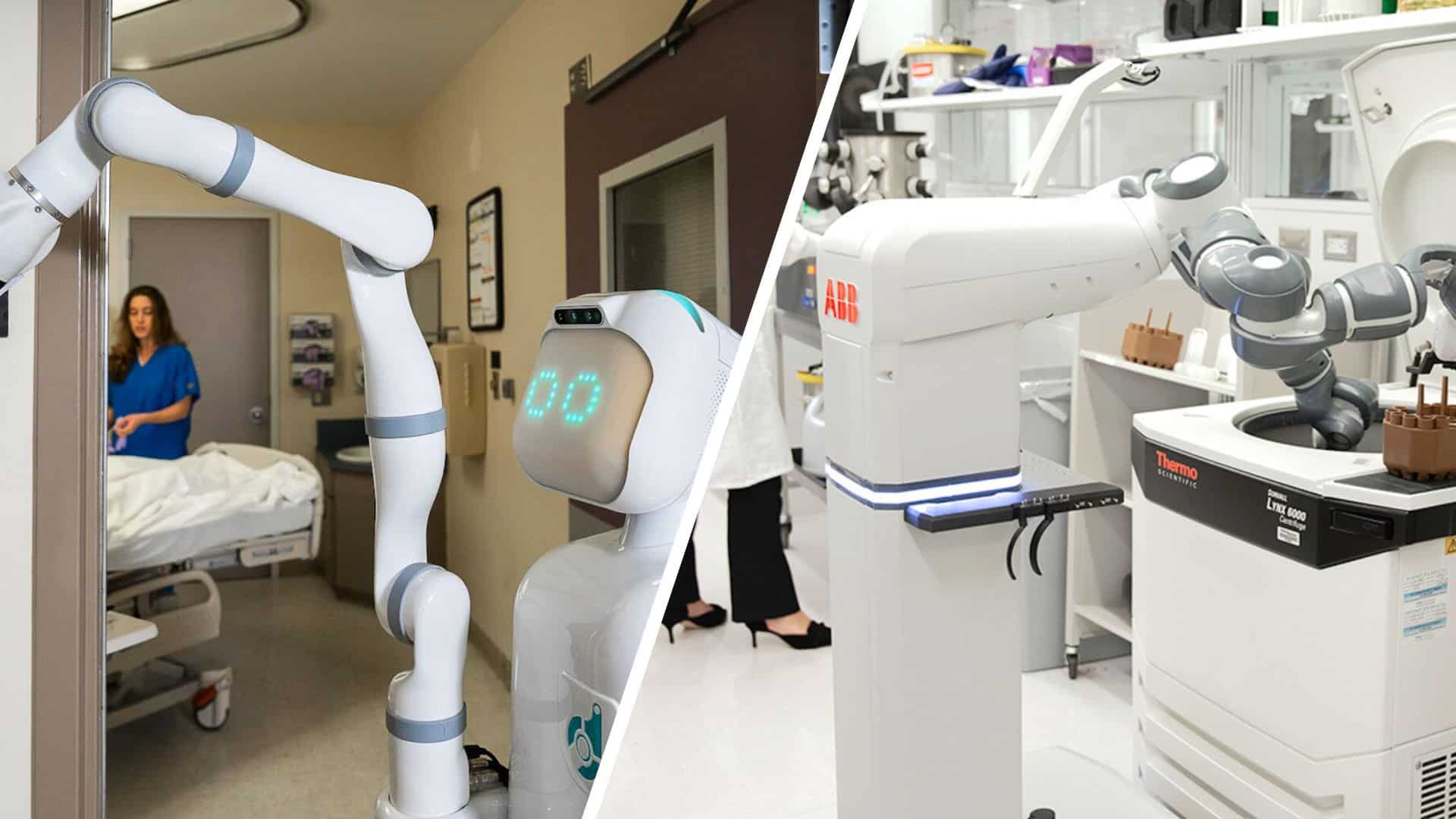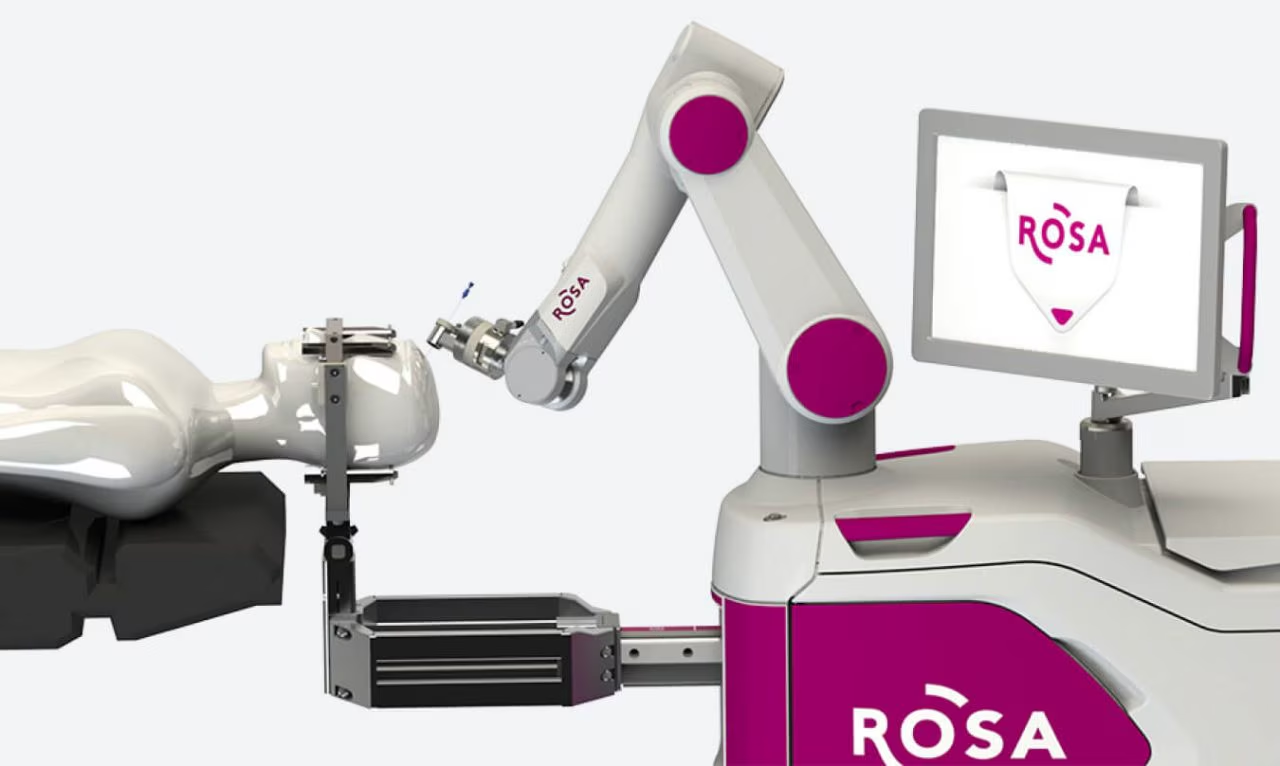The healthcare industry constantly seeks innovative solutions to improve patient care and streamline processes.
As technology advances, robotics has emerged as a powerful tool with the potential to revolutionize the medical field.
By integrating robotic systems into various aspects of healthcare, we can enhance surgical precision, automate repetitive tasks, and provide personalized assistance to patients.
In this blog post, we’ll explore the exciting future of robotics in healthcare and how it promises to transform medical service delivery.
We’ll discuss the current applications of medical robots, their benefits, and the potential developments.
Join us as we uncover the remarkable possibilities of robotics in shaping the future of healthcare.
Types of Robots in Healthcare
1. Surgical Robots

Surgical robots enable minimally invasive surgeries, offering enhanced precision and control.
These advanced systems allow surgeons to perform complex procedures through small incisions, resulting in faster recovery times and reduced risk of complications for patients.
One of the most well-known surgical robotic systems is the da Vinci, which has revolutionized various surgical specialties, including urology, gynecology, and cardiac surgery.
The da Vinci system has improved patient outcomes and shorter hospital stays by providing surgeons with high-definition 3D vision and precise instrument control.
2. Rehabilitation Robots
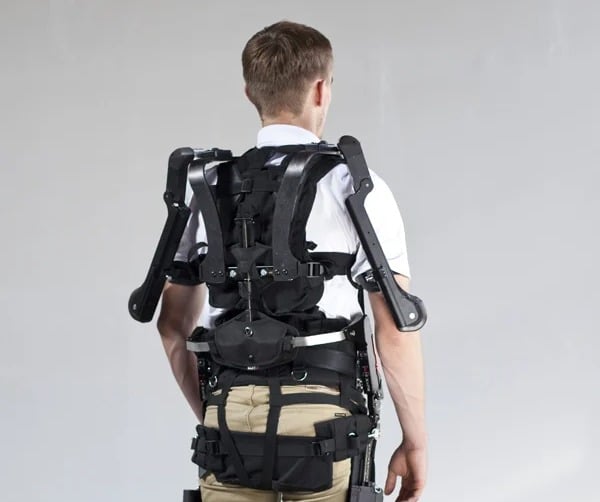
Rehabilitation robots, such as exoskeletons, transform how patients recover from injuries or disabilities.
These innovative devices support and guide patients through rehabilitative exercises, helping them regain mobility and independence.
Exoskeletons have proven particularly effective in assisting patients with spinal cord injuries or stroke-related paralysis.
Success stories of patients taking their first steps with robotic exoskeleton aid highlight these technologies’ incredible potential in rehabilitation medicine.
3. Service Robots
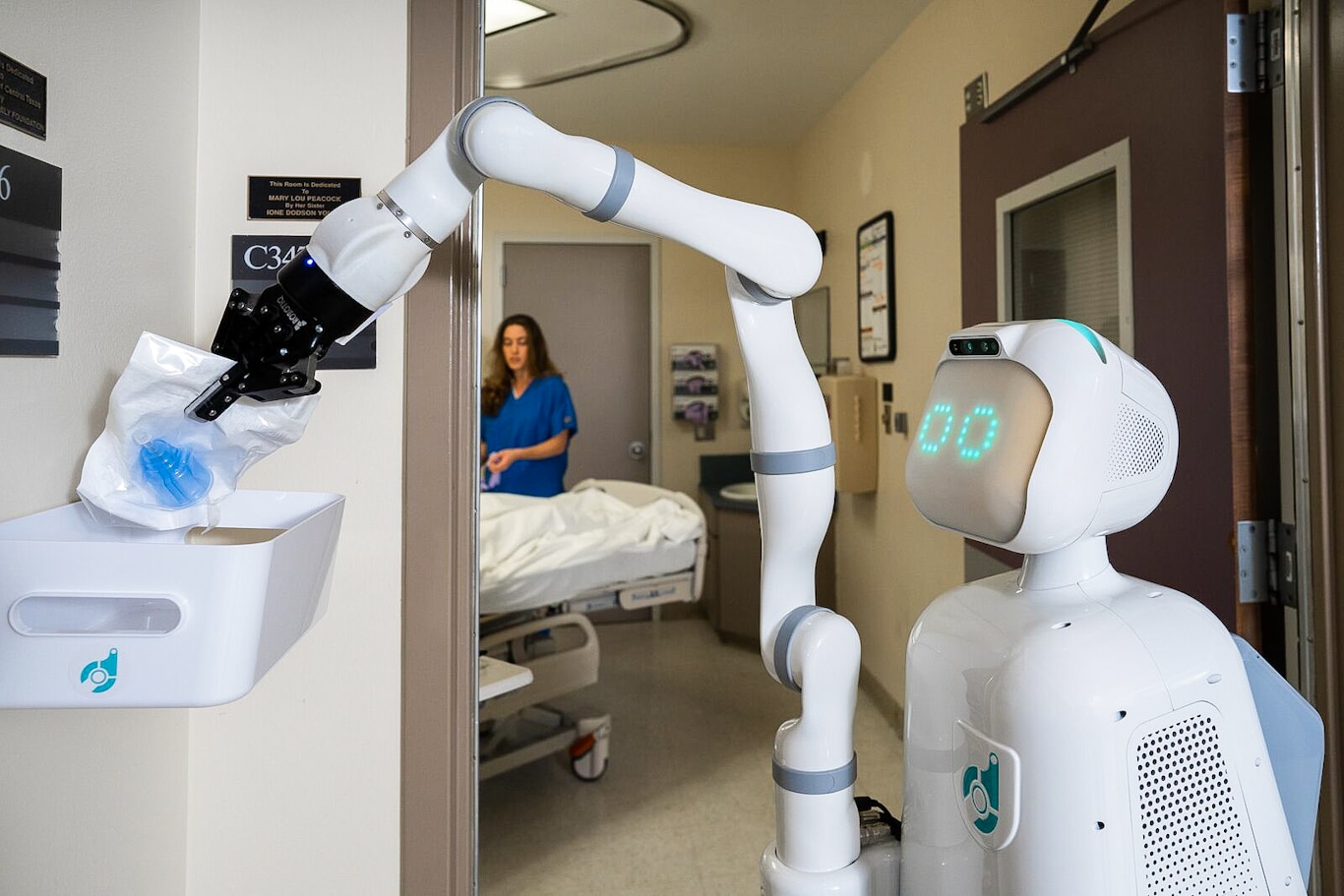
Service robots provide essential logistical support in healthcare settings, streamlining various tasks to improve efficiency.
These robots can autonomously navigate hospital corridors to deliver medical supplies, medications, and meals to patient rooms. They can also assist in preparing and disinfecting patient rooms, ensuring a clean and safe environment.
By automating these time-consuming tasks, service robots allow healthcare professionals to focus more on direct patient care, ultimately enhancing the overall quality of service.
4. Social Robots
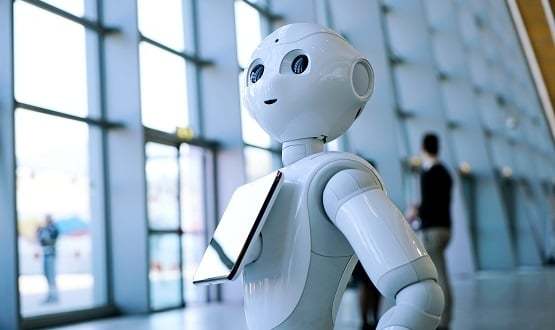
In long-term care facilities, social robots significantly impact patient mental health and well-being.
These friendly companions engage with patients, providing social interaction and emotional support. They can remind patients to take medications, offer cognitive stimulation through games and activities, and monitor vital signs.
Studies have shown that social robots can reduce loneliness and depression among elderly patients, promoting a sense of companionship and improving overall quality of life.
5. Laboratory Robots

Laboratory robots are revolutionizing the way medical tests and analyses are conducted.
These automated systems can precisely sort and process large volumes of samples, ensuring accurate results and minimizing human error.
From blood tests to genetic sequencing, laboratory robots can handle repetitive and delicate tasks with incredible speed and consistency.
Labs can significantly increase their throughput by automating these processes, reducing turnaround times for critical test results. This efficiency boost allows healthcare professionals to make timely decisions based on reliable data, ultimately benefiting patient care.
The Role of Robotics in Healthcare
1. Surgical Assistance
Robotics have become integral to complex surgical procedures, providing surgeons with unparalleled precision and control.
In neurosurgery, robotic systems like the ROSA Brain allow for highly accurate, minimally invasive brain surgery. These systems use advanced imaging and navigation technologies to map the surgical site, enabling surgeons to perform delicate procedures with reduced risk of damaging surrounding tissues.
Similarly, robotic-assisted systems like the Mako Robotic-Arm Assisted Surgery System in orthopedic surgery have shown remarkable results in knee and hip replacement surgeries, ensuring optimal implant placement and reducing post-operative complications.
2. Rehabilitation Support
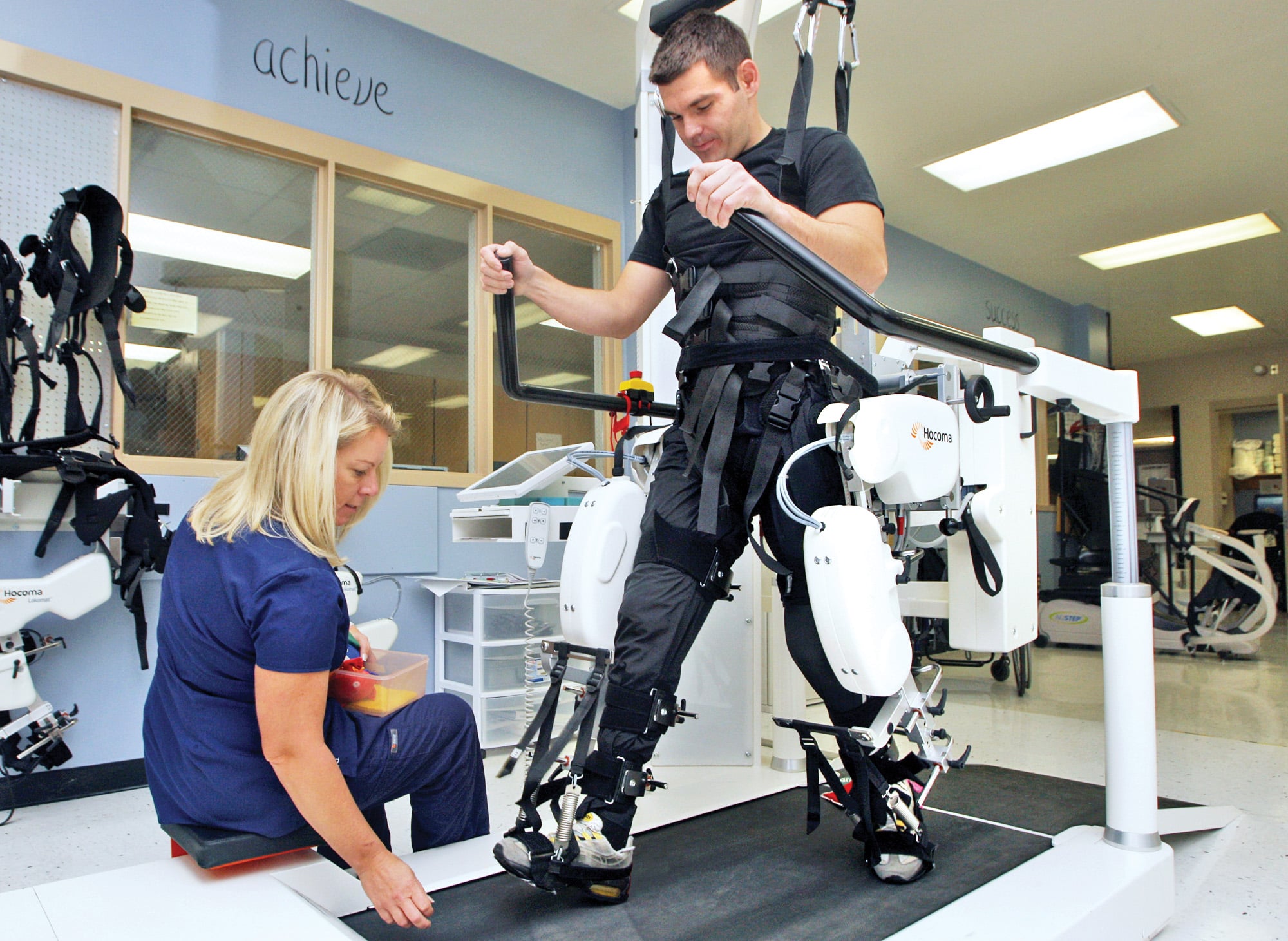
Rehabilitation robots are transforming the way patients recover from injuries or disabilities.
The Lokomat, a robotic gait training system, helps patients with spinal cord injuries or neurological disorders regain their ability to walk. By providing consistent and controlled support, the Lokomat enables patients to practice walking patterns repetitively, promoting neural plasticity and speeding up recovery times.
Another example is the InMotion ARM, a robotic device that assists stroke patients in regaining upper limb function. The InMotion ARM helps patients improve their range of motion, strength, and coordination through interactive games and personalized therapy sessions.
3. Operational Automation

Integrating robotics in healthcare extends beyond patient care, significantly impacting operational efficiency.
Automated guided vehicles (AGVs) are being used to transport medical supplies, linens, and meals throughout hospitals, freeing up staff time for more critical tasks. In one case study, implementing AGVs in a large hospital reduced supply delivery times by 50% and increased staff satisfaction.
Additionally, robotic pharmacy systems like the ROBOT-Rx have streamlined medication dispensing processes, reducing the risk of medication errors and enhancing patient safety.
4. Enhanced Patient Interaction

Robots also transform how healthcare providers interact with patients, particularly in long-term care settings.
Social robots like the PARO Therapeutic Robot, designed to resemble a baby seal, have shown remarkable benefits in reducing stress and anxiety among dementia patients. These robots respond to touch and voice, providing a calming presence and promoting social engagement.
In pediatric care, robots like the MEDi distract and comfort children during medical procedures, reducing fear and improving the patient experience.
Technological Enablers and Innovations
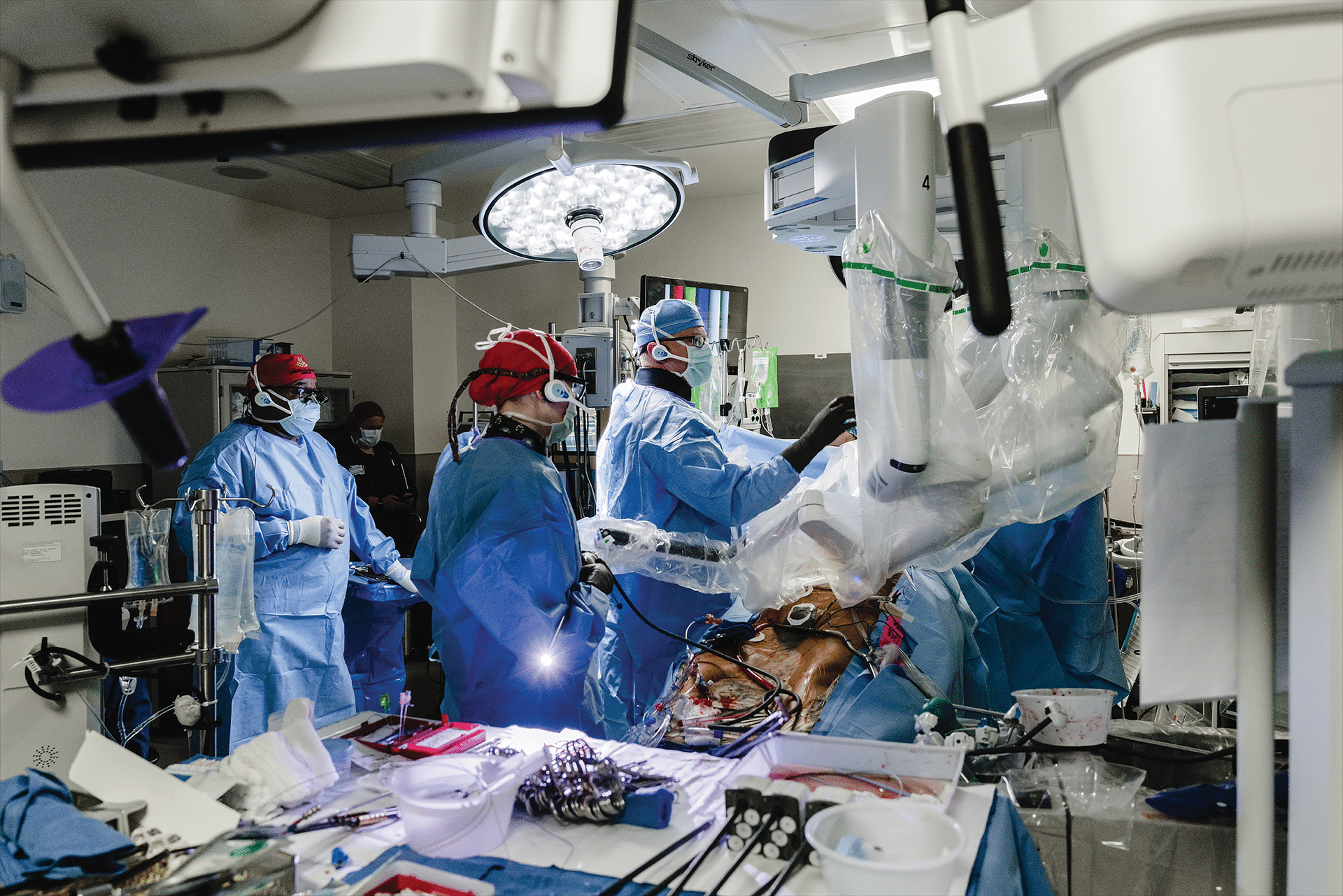
1. AI-powered surgical robots analyze vast amounts of surgical data to:
- Assist surgeons in making real-time decisions
- Predict potential complications
2. Example: AI-assisted robotic system by Johns Hopkins University researchers
- Accurately identifies and classifies brain tumors during surgery
- Ensures more precise tumor removal
3. Machine learning algorithms optimize robotic rehabilitation systems
- Adapt therapy sessions to each patient’s unique needs and progress
Telemedicine and Remote Operations
1. The COVID-19 pandemic accelerated the adoption of telemedicine and remote robotic operations.
- Teleoperated robots allow remote care and support, reducing infection risk.
2. Example: InTouch Vici Surgical System
- Enables surgeons to perform remote surgeries
- Uses high-definition video and haptic feedback
3. Future developments in telemedicine robotics:
- Advanced systems for remote consultations, diagnoses, and surgical interventions
- Integration of 5G networks and augmented reality technologies
- Enhances capabilities of telemedicine robots
- Enables real-time collaboration and immersive remote experiences
Benefits of Robotics in Healthcare

Improving Surgical Outcomes
1. A study by the University of Pennsylvania found that robotic-assisted surgery resulted in:
- 32% reduction in complications
- 25% reduction in blood loss
- 24% shorter hospital stays compared to traditional surgery
2. Case study: The University of Illinois Hospital & Health Sciences System
- Implemented robotic surgery for gynecologic procedures
- Reduced surgery times by 27% and patient recovery times by 50%
Operational Efficiency
1. Robotic automation in healthcare can lead to significant cost savings
- Estimated $16.3 billion in savings globally by 2025 (Accenture)
2. Case study: The University of California, San Francisco Medical Center
- Implemented a robotic pharmacy system, saving $1 million annually
- Reduced medication errors by 65% and increased productivity by 25%
3. Enhanced Patient Experience
1. Patient testimonial: “The robotic exoskeleton allowed me to walk again after my spinal cord injury. It gave me hope and independence.” – John, 35
2. Data from the National Rehabilitation Hospital:
- Patients using robotic gait training showed 30% faster recovery times
- 90% of patients reported improved quality of life after robotic therapy
Challenges and Considerations
Ethical and Social Implications
1. Ethical concerns arise when robots are involved in medical decision-making
- Questions about accountability and liability in case of errors
- Potential bias in AI algorithms used in robotic systems
2. Patient trust issues
- Some patients may feel uncomfortable with robots providing care
- Importance of clear communication and informed consent
Economic Impact
1. High initial costs for implementing robotic systems in healthcare
- Long-term cost savings through improved efficiency and outcomes
2. Potential impact on healthcare employment
- Robotic automation may replace certain jobs but also create new roles
- Need for reskilling and training programs for healthcare workers
Technical and Safety Challenges
1. Cybersecurity risks
- Robotic systems vulnerable to hacking and data breaches
- Importance of robust security measures and regular software updates
2. Maintaining reliable robotic systems
- Need for regular maintenance and calibration
- Challenges in ensuring consistent performance and minimizing downtime
Future Outlook and Trends
The future of robotics in healthcare is promising, with advancements in AI and machine learning paving the way for more autonomous and adaptive robotic systems.
These sophisticated systems will enable improved decision-making and personalized treatment plans, tailoring care to each patient’s needs.
Integrating nanotechnology and micro-robotics also holds immense potential for targeted drug delivery and minimally invasive procedures. These tiny robotic devices could revolutionize early detection and treatment of diseases at the cellular level, offering unprecedented precision and effectiveness.
As robotic technologies evolve, we can expect a significant shift towards more personalized and preventive care in healthcare delivery.
Robotic systems will enable continuous patient health monitoring, allowing for early intervention and proactive management of potential health issues. This paradigm shift will require updates to healthcare policies and regulations, ensuring that guidelines and standards keep pace with the rapid advancements in robotic healthcare.
Furthermore, the global nature of these developments will necessitate international collaboration and knowledge sharing to maximize robotics’ benefits in healthcare worldwide.
Conclusion
Integrating robotics in healthcare is revolutionizing how we approach patient care and medical procedures.
Robots transform the healthcare landscape from surgical assistance and rehabilitation support to operational automation and enhanced patient interaction.
As advancements in AI, machine learning, and telemedicine continue to push the boundaries of what’s possible, we can expect even more groundbreaking developments.
However, addressing this technological shift’s ethical, social, and technical challenges is crucial.
By fostering collaboration between healthcare professionals, robotics experts, and policymakers, we can ensure that robotics’ benefits in healthcare are maximized while minimizing potential risks.
As we move forward, it’s clear that the future of healthcare is inextricably linked to the power of robotics, and the possibilities are truly exciting.
Glossary of Terms
- AI (Artificial Intelligence): The simulation of human intelligence in machines programmed to perform tasks that typically require human intelligence.
- Haptic feedback: Tactile feedback technology recreates the sense of touch by applying forces, vibrations, or motions to the user.
- Minimally invasive surgery: A surgical procedure performed through small incisions using specialized instruments and robotic assistance.
- Telemedicine: The remote delivery of healthcare services using telecommunications technology.
- Exoskeleton: A wearable robotic device designed to support and enhance human movement, often used in rehabilitation and physical therapy.
- Machine learning: A subset of AI that involves training algorithms to learn from data and improve performance over time without being explicitly programmed.
- Nanotechnology: The manipulation of matter on a nanoscale (typically between 1 and 100 nanometers) to create devices and materials with novel properties and functions.
- Robotic-assisted surgery: A minimally invasive surgery where surgeons use robotic systems to control surgical instruments with enhanced precision, flexibility, and control.
- Teleoperation: The remote operation of a robot or machine by a human operator, often used in telemedicine and remote surgical procedures.
- 5G networks: The fifth generation of cellular network technology, offering faster speeds, lower latency, and increased bandwidth compared to previous generations, enabling advanced applications in telemedicine and remote robotics.
Frequently Asked Questions
How is Robotics Changing the Future of Healthcare?
Robotics is revolutionizing healthcare by improving surgical precision, enhancing patient care, and streamlining operations.
Will Robots Replace Humans in Healthcare?
While robots will assist and augment human capabilities, they won’t completely replace healthcare professionals.
Will Nurses Ever be Replaced by Robots?
No. Nurses cannot be replaced. Nurses’ human touch and critical thinking skills remain essential.

